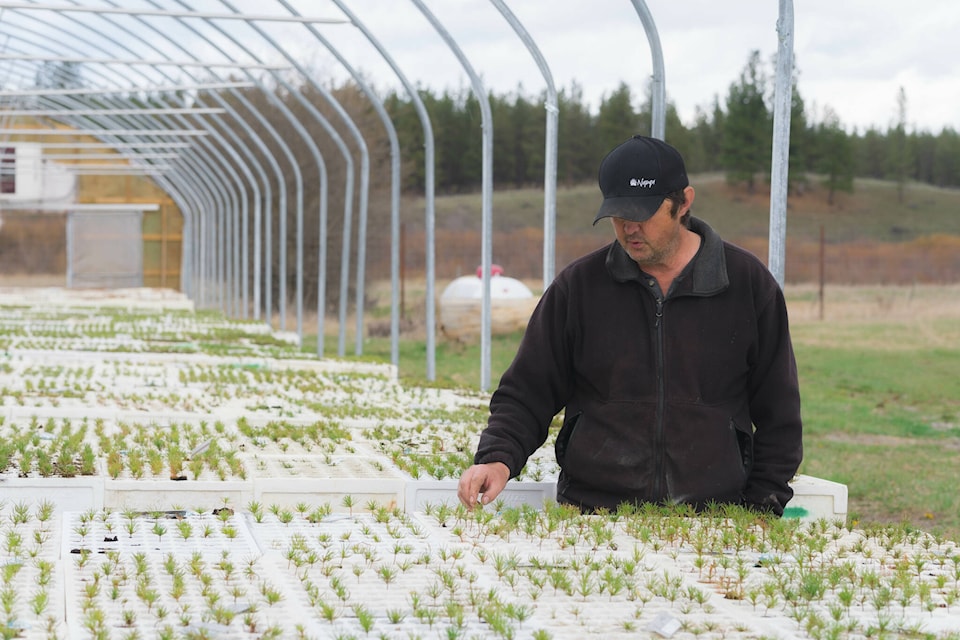From Columbia Basin Trust
Imagine that chocolate was an essential food. Now imagine that chocolate was getting scarce. That’s what it’s like for grizzly bears when it comes to the seeds of whitebark pine trees.
“The seeds are quite large and nutritious and they’ve got more energy than chocolate, apparently,” said Adrian Leslie, West Kootenay project manager of the Nature Conservancy of Canada (NCC).
Unfortunately, in the Columbia Basin and many other North American areas, a fungus is decimating whitebark pine trees.
NCC is working to remedy this, with support from Columbia Basin Trust. One recent project is helping to restore whitebark pine in the Darkwoods Conservation Area, a 63,000-hectare protected space between Nelson and Creston that the organization owns and manages.
The fungus—white pine blister rust—came to North America in about 1910 in a shipment of seedlings from Europe. Most local whitebark pines aren’t equipped to fight it. So over the course of years or decades, many of them die, and the tree is now an endangered species under the federal Species at Risk Act.
On a hopeful note, Leslie says that roughly one per cent of the native whitebark pine trees have a resistance to the blister rust.
Restoration efforts focus on these naturally resistant trees, but it’s not a simple process. The first step is to find healthy trees.
“You have to be able to access the cones,” Leslie said. “That’s quite challenging because they only grow on the very tips of the top branches.”
In July, a professional arborist cages the cones so that birds called Clark’s nutcrackers won’t harvest them all for themselves. Then in September, the arborist returns to collect the cones, and the seeds are extracted.
That’s when a greenhouse takes over for a while - Nupqu Native Plant Nursery, a Ktunaxa-owned business near Cranbrook. Because whitebark pine isn’t a commercial tree species, Nupqu has had to figure things out along the way and refine its techniques year by year.
“There’s not much expertise on growing them,” Leslie said. “There’s a fairly involved process to get them to actually germinate.”
After two growing seasons in the greenhouse, the seedlings are ready to plant. For the Darkwoods project, the seeds were collected in 2018 and planting was scheduled for 2021, 2022, and 2023. In total, the target is to plant 60,000 seedlings.
Because the process is so involved, it was a great match for the Trust’s Ecosystem Enhancement Program. The goal of this program is to support multi-year, in-depth projects that help maintain and improve ecological health and native biodiversity in a variety of ecosystems. As of spring 2022, the Trust supported 14 terrestrial projects, three aquatic, and six wetlands.
The project is also benefiting other forested areas. By collecting more seeds than it needs, NCC has been able to give seeds to other whitebark pine restoration projects in the region. This includes the provincial Forest Carbon Initiative’s work in West Arm Park and the Harrop-Procter Community Forest.
Once this particular Darkwoods project is done, more efforts will likely take its place.
“I don’t really see an end to the restoration,” Leslie said. “For the foreseeable future, there will always be new stands to plant.”
When the seedlings mature into cone-bearing trees—which can take up to a century—they’ll have significant effects, producing seeds for the next generation of fungus-resistant trees. These will in turn support species like grizzly bears, Clark’s nutcrackers, and squirrels.
“It’s a long-term project,” Leslie said. “It’s thinking into the 22nd century and beyond.”
READ MORE: Call for West Kootenay anglers to help with research project
